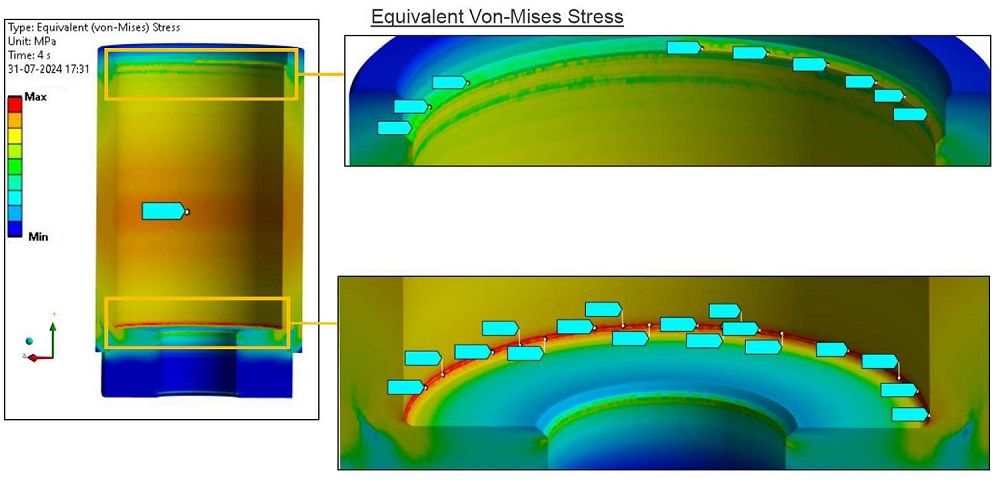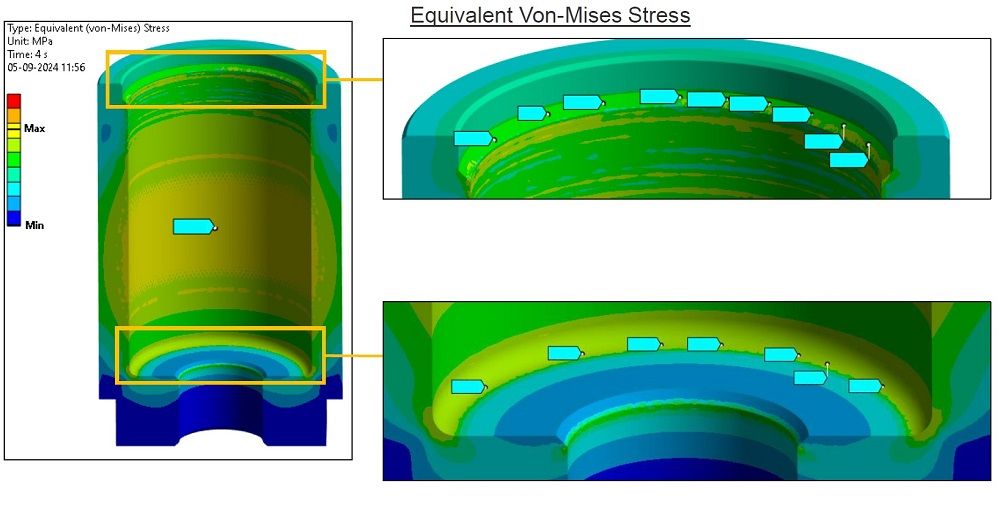
In the field of hydraulic filtration, precision and reliability are crucial for ensuring optimal component performance and durability.
The design of hydraulic filters requires a deep understanding of mechanical stresses and structural integrity, especially under high pressure and demanding operating conditions.
To achieve these goals, Finite Element Method (FEM) simulation has a key role in optimizing the design of filters and ensuring their robustness.
Understanding FEM Simulation
FEM simulation is a numerical method used to analyse and predict the mechanical behaviour of structures under various conditions.
In this method, complex geometries are subdivided into smaller, base elements (usually parallelograms or pyramids), enabling engineers to study stress distributions, deformation, and potential failure points with high accuracy.
In hydraulic filtration, FEM analysis is essential to evaluate the mechanical performance of filter housings, elements, and other critical components before physical prototyping.
Key Benefits of FEM in Hydraulic Filter Design
- Structural Optimization
FEM simulation allows engineers to optimize the design of hydraulic filters by identifying weak points and reinforcing/modifying critical areas. This results in lightweight yet durable structures that withstand extreme conditions. - Prediction of Mechanical Failures
By simulating different load scenarios, FEM helps engineers to detect potential failure modes such as material fatigue, excessive deformation, and structural instability, reducing the risk of unexpected breakdowns in real applications. - Improved Safety and Reliability
Hydraulic filters often operate under high-pressure conditions, making safety a top priority.
FEM analysis ensures that components can sustain these pressures without risk of deformation or rupture, increasing the reliability of the filtration system. - Reduced Development Time and Costs
Virtual simulations significantly reduce the need for physical prototyping and testing, leading to shorter design cycle times and cost savings. By validating designs digitally, manufacturers can accelerate the time-to-market while maintaining high standards of quality. - Material Optimization
FEM simulations help in selecting the most suitable materials for hydraulic filters by evaluating their mechanical properties under real-world conditions. This ensures that there is a balance between performance, weight, and cost efficiency.
First version

Second version, after development

Application of FEM at UFI Filters Hydraulics
At UFI Filters Hydraulics, we integrate FEM simulation into our design process to develop innovative and robust filtration solutions. Our engineering team leverages advanced simulation tools to analyse and refine the mechanical properties of our filter housings, elements, and structural components. This approach allows us to guarantee the excellent performance of our products, which meet the most demanding industrial standards.
By combining FEM with other advanced simulation techniques, such as Computational Fluid Dynamics (CFD), we ensure that our hydraulic filters offer both superior mechanical strength and optimal fluid flow dynamics. This holistic approach to engineering maximizes product reliability and efficiency across various applications, from industrial machinery to mobile hydraulic systems.
Conclusion
FEM simulation is an indispensable tool for the design and development of hydraulic filters. It enables engineers to optimize structural integrity, enhance safety, and reduce development costs while delivering reliable, high-performance filtration solutions. At UFI Filters Hydraulics, we continue to leverage cutting-edge simulation technologies to drive innovation and provide our customers with the most efficient and durable filtration systems available.
For more information on our advanced engineering capabilities, visit our website or contact our team of experts.